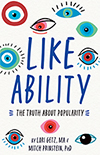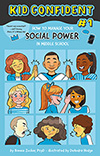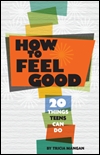Search engines and social media algorithms can expose adolescents to other types of cyberhate, including racism. In fact, online algorithms often have structural racism and bias baked in, in ways that White users might not even notice. Sometimes, the algorithms themselves churn out biased or racist content. TikTok, for instance, has come under fire for recommending new accounts based on the appearance of the people a user already follows—with the inadvertent effect of segregating the platform. In addition to this form of “algorithmic bias,” people of color are frequently subjected to what some researchers call “filter bias.” In one common example, the beauty filters built into sites like Instagram or Snapchat might apply paler skin or more typically White facial features to a user’s selfies.
Like microaggressions in offline life, online racism in the form of algorithmic and filter bias can take a toll on mental health, said Brendesha Tynes, PhD, a professor of education and psychology at the University of Southern California, and a member of the APA advisory panel. In an ongoing daily diary study with adolescents, she is finding evidence that people who are exposed to algorithmic and filter bias are at increased risk of next-day depression and anxiety symptoms.
“I’m an adult who studies these issues and who has a lot of strategies to protect myself, and it can still be really hard” to cope with online racism, she said. Impressionable teens who haven’t learned such strategies are likely to experience even greater psychological impacts from the racism they encounter every day on social media. “We’re just beginning to understand the profound negative impacts of online racism,” Tynes said. “We need all hands on deck in supporting kids of color and helping them cope with these experiences.”
Despite the drawbacks of technology, there is a silver lining. Tynes has found Black youth receive valuable social support from other Black people on social media. Those interactions can help them learn to think critically about the racism they encounter. That’s important, since her research also shows that youth who are able to critique racism experience less psychological distress when they witness race-related traumatic events online (Journal of Adolescent Health, Vol. 43, No. 6, 2008).
Tynes said more research is needed to understand how online racism affects youth and how best to protect them from its harms.
“Different groups have vastly different experiences online,” she said. “We need more detailed recommendations for specific groups.”
A role for psychology
How to protect kids from online racism is just one of a long list of questions on researchers’ wish lists. Digital technologies evolve so quickly that kids are off to a new platform before scientists can finish collecting data about yesterday’s favorite sites. “There’s so much we still don’t know about this topic. That’s understandably frustrating for people because social media is impacting people’s lives as we speak,” Nesi said.
It’s likely some groups, and some individuals, are more susceptible than others to the negative effects of social media, she added. “We need more information about who is more vulnerable and who is more resilient, and what it is they’re doing online that’s healthy versus harmful.”
While there is a lot of work to be done, Nesi said, “we’re getting closer.” As APA’s recommendations make clear, there is ample evidence some types of content and online behaviors can harm youth. Adult role models can work together with teens to understand the pitfalls of technology and establish boundaries to protect them from dangerous content and excessive screen time.
Psychological research shows children from a young age should be taught digital literacy skills such as identifying misinformation, protecting privacy, understanding how people can misrepresent themselves online, and how to critically evaluate race-related materials online. One way to promote those skills may be to lean into teens’ inherent skepticism of grown-ups. “You can teach kids that a lot of people want something from them,” Alvord said—whether it’s a stranger trying to message them on Instagram, or TikTok earning money by collecting their data or showing them branded content.
That’s not to say it’s easy to help kids develop a healthy relationship with social media. “By necessity, adolescents disagree more with their parents—and they are formidable when they insist on having something, like phones or social media, that all their friends have,” McCabe said. “But parents are eager for guidance. There is an appetite for this information now,” she added—and psychological scientists can help provide it.
That scientific research can inform broader efforts to keep children safe on social media as well. “Parents can’t do this alone,” Nesi said. “We need larger-scale changes to these platforms to protect kids.”
There are efforts to make such changes. The Kids Online Safety Act, a bipartisan bill introduced in April, establishes a duty of care for social media companies to protect minors from mental health harms, sex trafficking, narcotics, and other dangers. Additionally, the bill requires social media companies to go through independent, external audits, allows researcher access to platform data assets, and creates substantial youth and parental controls to create a safer digital environment. Even as legislators and tech companies consider those and other policies, researchers can continue their efforts to determine which actions might be most protective, said Nesi, who is currently leading a study to understand which features of social media are helpful versus harmful for kids at high risk of suicide. “For some kids, being able to connect with others and find support is really important. For others, social media may create more challenges than it solves,” Nesi said. “The key is making sure we don’t accidentally do any harm” by enacting restrictions and legislation that are not backed by science.
While researchers forge ahead, clinical psychologists, too, can add valuable insight for teens and their families. “Screens are a central part of adolescents’ lives, and that needs to be integrated into assessment and treatment,” Nesi said. “Clinicians can help families and teens take a step back and look at their social media use to figure out what’s working for them and what isn’t.”
Someday, McCabe said, digital literacy may be taught in schools the same way that youth learn about sexual health and substance use. “I hope we’ll come to a point where teaching about the healthy use of social media is an everyday occurrence,” she said. “Because of this dialogue that we’re having now among families and policymakers, we may see a new generation of kids whose entry into the digital world is very different, where we can use social media for connection and education but minimize the harms,” she added. “I hope this is the beginning of a new day.”









